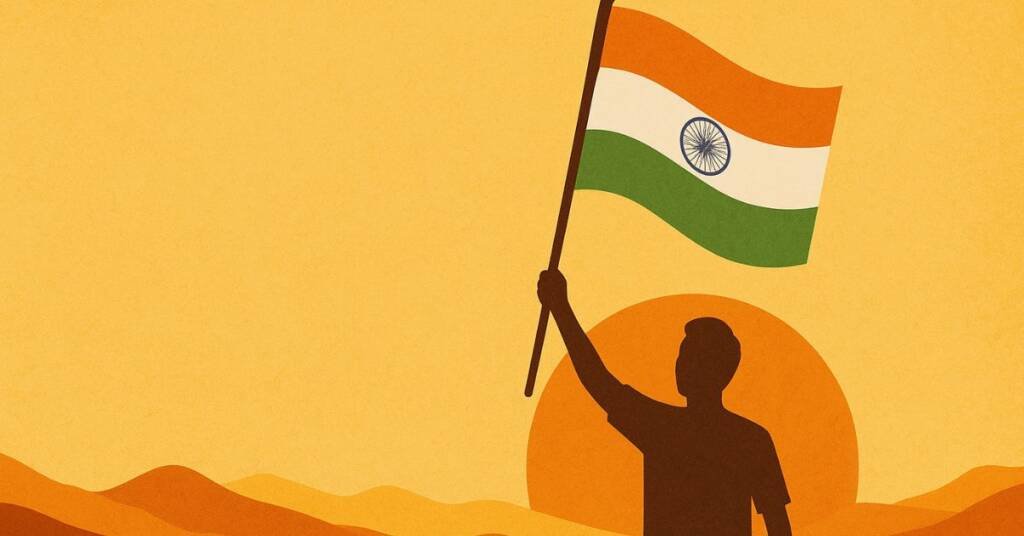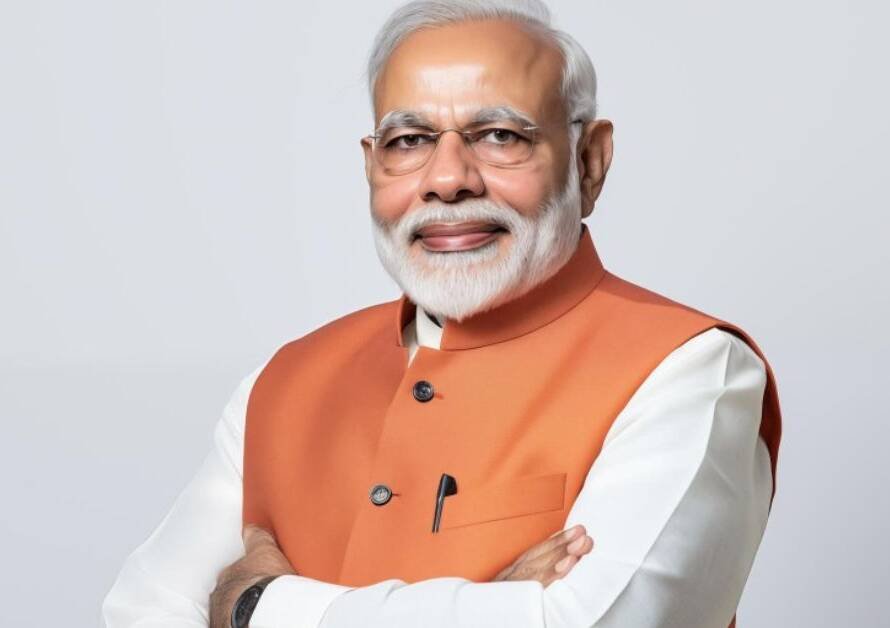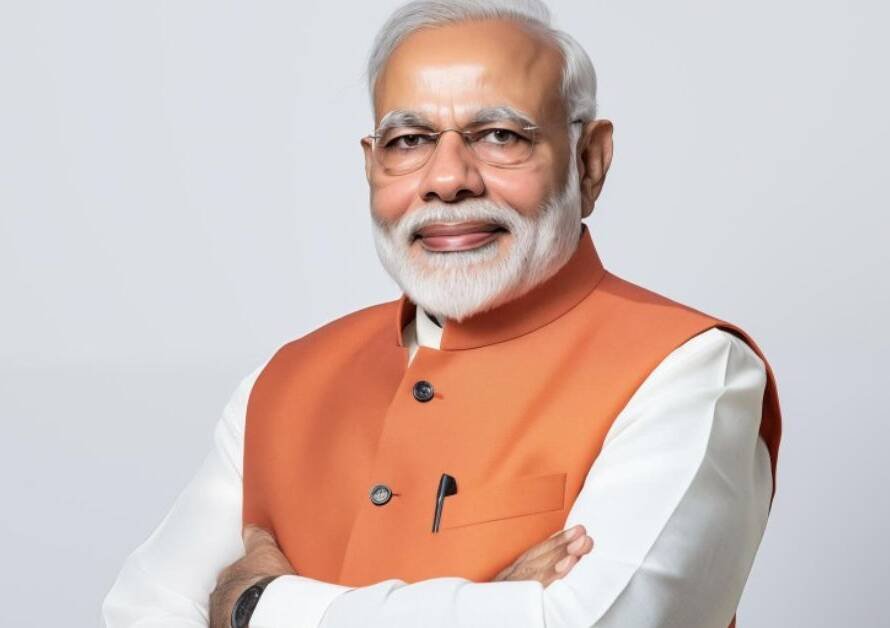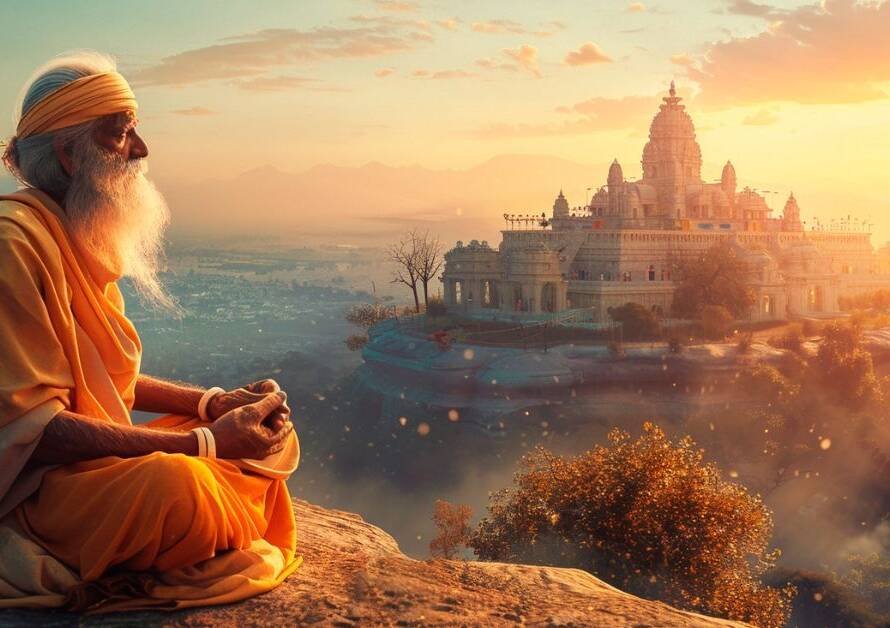The True Meaning of India’s Freedom
Ask the average citizen and you will hear: “1947.” Yes — in 1947 we finally broke the chains of British colonial rule, ending more than 200 years of systematic exploitation, calculated economic destruction, and cultural erasure.
The British Raj was not merely a foreign government; it was a calculated machinery of plunder. They dismantled our thriving industries, replaced self-reliance with dependency, and drained India’s wealth — an estimated $45 trillion in today’s value. Our learning centres were closed, our farmers pushed into poverty, and our artisans reduced to beggars.
The blood, sweat, and sacrifices of thousands of freedom fighters made this possible. From great revolutionaries like Bhagat Singh, Chandrashekhar Azad, Subhas Chandra Bose, and countless unsung heroes in villages and towns — to ordinary farmers and workers who joined protests despite knowing the brutal reprisals they would face — India’s fight for freedom was relentless.
But when the moment came, credit was cornered by the Gandhi–Nehru duo. The narrative of independence was rewritten to glorify a single family, planting the seeds for a political dynasty that would control India for decades to come.
The First Chains — 1,000 Years of Invasions
Our subjugation did not begin with the British. For nearly a millennium, Bharat faced Mughal and other Islamic invasions. These were not just military conquests — they were civilizational assaults.
- Invaders destroyed thousands of temples, the heartbeat of our culture — including Kashi Vishwanath, Somnath, and countless others reduced to rubble or desecrated.
- Immense wealth — gold, diamonds, jewels, sacred manuscripts — was stolen and sent to foreign lands.
- For centuries, rulers and invaders systematically undermined Sanatana Dharma, the world’s oldest living culture. They ridiculed or banned ancient traditions, restricted festivals, and burned learning centres like Nalanda to ash.
- Invaders ripped apart the social fabric by enforcing conversions, imposing discriminatory taxes like Jizya, and pushing foreign languages and customs that weakened our unity.
Yet, in every century, the spirit of resistance blazed bright.
- The Marathas under Chhatrapati Shivaji Maharaj built a swarajya from the ground up.
- Rajputana warriors fought heroically at Haldighati and beyond.
- The Vijayanagara Empire stood as a beacon of Hindu culture in the South.
- The Sikh Gurus and Khalsa warriors defended Dharma at the cost of their lives.
These defenders of Bharat kept alive the dream of sovereignty, often at unimaginable personal cost.
The Second Chains — Political Enslavement Post-1947
1947 should have been our sunrise. But instead, for the next 65 years, we lived under Congress rule — a different set of chains:
- Loot and exploitation did not end; it merely changed hands from foreign masters to a corrupt political elite.
- Mega scams like Bofors, 2G, and Coalgate drained public resources.
- Education, media, and policy sidelined, mocked, and weakened Sanatana Dharma.
- Muslim appeasement politics became the foundation of governance — a cynical vote-bank strategy that compromised national unity.
- Leaders often sacrificed national security for political gains, whether in handling terrorism or border aggression.
- The slow creep towards Islamization returned — the same dangerous path Bharat had fought for centuries to escape.
Indians were told they were free — but the colonial mindset remained. The rulers wore Indian clothes, but they governed with the same intent: to keep the people divided, dependent, and submissive.
The True Break — 2014
Then came 2014 When Narendra Modi assumed office, it was not merely a transfer of power — it was a civilizational turning point.
- Corruption networks that had operated with impunity were dismantled.
- Transparent governance replaced decades of cronyism.
- Infrastructure, digitalization, and economic reforms put India on the fast track to global relevance.
- Sanatana Dharma and cultural pride flourished — people celebrated festivals openly, communities revived heritage sites, and the world recognized the value of ancient traditions.
- Leaders recognized and countered the danger of Islamization, protecting Bharat’s civilizational core.
- Self-reliance (Aatmanirbhar Bharat), defence modernization, and foreign policy assertiveness marked the beginning of a new era of strength.
For the first time since ancient empires, Bharat began to act like a confident, sovereign civilization.
Why 2014 is the Real Independence Year
1947: Freedom from foreign rule.
2014: Freedom from internal betrayal.
- In 2014, Bharat broke free from:
- Political dynasties and feudal politics.
- Decades of loot and corruption.
- Vote-bank appeasement that divided society.
- Civilizational amnesia.
- The creeping shadow of religious subjugation.
It was the moment Bharat reclaimed her soul.
Never Again
Bharat will never again bow to invaders, foreign masters, or corrupt dynasties.
- From the Rajput battlefields to the streets of Quit India, from the Maratha forts to the ballot boxes of 2014 — our journey has been long, bloody, and unyielding.
- 2014 was not just an election.
It was a resurrection.
“We are free. Truly free. And we will never be slaves again.”
🇮🇳 Jai Bharat, Vandematram 🇮🇳
For old Blogs please visit our website www.saveindia108.in
To join our whatsapp Community please click
https://chat.whatsapp.com/FMr2WNIgrUVG9xK78FW5Dl?mode=r_t
To join our Telegram group please Click https://t.me/+T2nsHyG7NA83Yzdl Old Blogs are available on the telegram group also.







